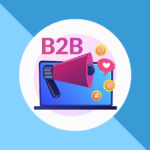In 2020, Google rolled out Consent Mode. Typically, when you enter a website, a banner pop-up will appear asking for your consent to be tracked by cookies. Google created Consent Mode to help respect a user’s consent for cookies and help businesses comply with privacy regulations, while still generating customer insights from user data.
How Does Google’s Consent Mode Work?
When you first visit a website, a cookie preference banner will usually display asking for your consent. When you have implemented Google’s Consent Mode, it will fire cookies depending on the consent given. The exact behaviour of the tags fired will be different depending on which ones the user agreed to. This is done through Google Tag Manager. Using Consent Mode means that you don’t need to use complex tag snippets or firing conditions to collect data.
Google products that support Consent Mode:
- Google Ads
- Google Analytics
- Floodlight
- Conversion Linker
Learn More about Google Consent Mode
Consent Mode’s Impact on Google Ads
Currently, when a user opts out of being tracked by cookies, Google can no longer tie a user’s action in Google Ads to actions on the website.
To help retrieve data on users who have converted on a website after interacting with a Google Ad, Google has created modeled online conversions. It offers a better understanding of conversions from users that did not consent to cookies.
When a user opts out of tracking, the information surrounding any action they take on the website is not available to Google Ads, creating a gap in data attribution. Modeled online conversions closes that gap. It helps to fill in the blanks by using machine learning to analyze data and historical trends between consented and unconsented users. That data can then be pieced together to predict the likelihood of conversion events from an unconsented user when they’ve interacted with an ad. Without modeling for Google Ads, conversions would only be reported by users who consented rather than the true performance of the campaign.
Who Has Access to Consent Mode Modeling
Google has strict criteria for who can access consent mode modeling. Here’s who can access the data collected:
- Advertisers with a presence in the European Economic Area (EEA) or the UK
- Businesses who have correctly implemented consent mode or the IAB Transparency & Consent Framework (TCF v2.0)
- Have a daily ad click threshold of 100 clicks per day, per country and domain grouping
Benefits of Google’s Consent Mode
Google’s Consent Mode allows businesses to continue monitoring behaviour and conversions while also complying with privacy regulations. This is the largest benefit as it allows you to be compliant with regulations surrounding cookies.
If your business is GDPR compliant, you may have only been collecting data once a user consented. If they did not consent, you did not receive their data. With Consent Mode, you can increase the window of data collected and receive more coverage of your website measurement. While the anonymous data that is being collected isn’t shared with you, it is being put to good use.
Why We Care
The impact of privacy laws on advertisers and businesses means that adapting to expanding regulatory frameworks is crucial. Google’s Consent Mode allows businesses to continue to collect data and conversions while respecting user consent and complying with local privacy regulations. It also closes the gaps in conversion data collected by Google Ads and gives a better understanding of the complete picture of a campaign’s performance.
Need some help navigating cookies and consent?








